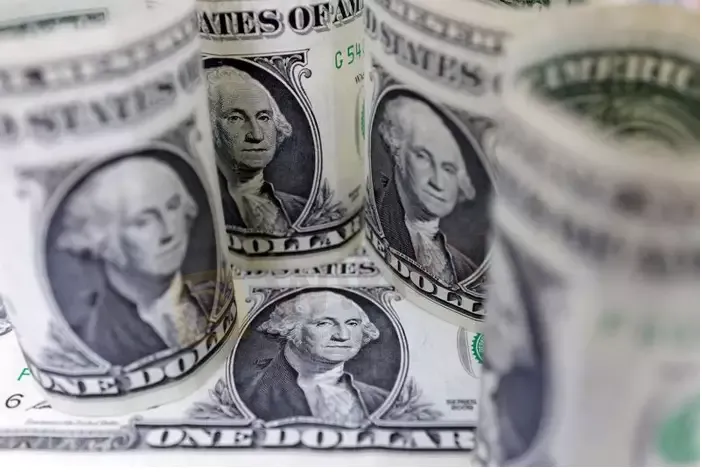简体中文
繁體中文
English
Pусский
日本語
ภาษาไทย
Tiếng Việt
Bahasa Indonesia
Español
हिन्दी
Filippiiniläinen
Français
Deutsch
Português
Türkçe
한국어
العربية
Dollar stands tall as Fed doves talk tough
Abstract:The U.S. dollar remained elevated on Wednesday following its biggest surge in three weeks against major peers overnight, with Federal Reserve officials talking up the potential for further, aggressive interest rate hikes.

The U.S. dollar index, which gauges the currency against six major peers, wobbled about 0.3% lower by the Asian afternoon to 106.120, amid a hint of relief that House Speaker Nancy Pelosis visit to Taiwan brought few surprises.
The euro inched 0.2% higher to $1.1085, though it remains under pressure, while the yen clawed back a little of its overnight drop at rose 0.3% to 132.71 per dollar.
Pelosis arrival in Taiwan, which China considers a breakaway province, prompted anger in Beijing, with warplanes buzzing the Taiwan Strait and the announcement of live-fire military drills — though investors felt this was expected.
“The market got a bit more relaxed, perhaps over the U.S.-China situation.” said Moh Siong Sim, currency strategist at Bank of Singapore. “I think the market was bracing probably for a worse outcome, maybe no news is good news.”
On Tuesday, Fed officials Mary Daly and Charles Evans signalled that they and their colleagues remain resolute and “completely united” over getting rates up to a level that will more significantly curb economic activity.
The comments by “the normally very dovish Daly” and “the equally very dovish Evans” helped yields and the dollar higher, and the dollar index could top 108 in the next few weeks, according to Kristina Clifton, a strategist at Commonwealth Bank of Australia, writing in a note to clients.
Benchmark 10-year Treasury yields, were steady on Wednesday after leaping nearly 14 basis points overnight. [US/]
Sterling edged 0.2% higher to $1.2180, while the Antipodeans were pinned near Tuesdays lows and seem to be taking a breather from a month-long rally. [GBP/]
The Australian dollar slumped on Tuesday after the central bank opened the door to a slowdown or pause in the pace of future hikes. It was last steady at $0.6930. [AUD/]
The New Zealand dollar slipped after a surprise rise in unemployment also weighed on hike expectations. It was last at $.06255.

Disclaimer:
The views in this article only represent the author's personal views, and do not constitute investment advice on this platform. This platform does not guarantee the accuracy, completeness and timeliness of the information in the article, and will not be liable for any loss caused by the use of or reliance on the information in the article.
Read more

Trading is an Endless Journey
Every trader dreams of quick success, but rushing the process often leads to mistakes. It’s easy to get swept up in the excitement of winning trades or discouraged by unexpected losses. The truth is, mastering the emotional side of trading can be even more important than understanding market analysis or strategies.

How to Know if the Market is Correcting or Reversing?
In trading, distinguishing between a market correction and a market reversal is crucial for making sound decisions. Misjudging one for the other can lead to missed opportunities or significant losses. While both involve price movements, their causes, duration, and implications differ substantially. Understanding these differences can help traders improve their strategies and adapt to market conditions effectively.

Empowering the Next Generation in Finance with WikiFX: Gen Z’s Investment Journey
With a steadfast commitment to fostering sustainable financial literacy and providing clear, strategic guidance to the next generation, WikiFX has collaborated with Van Lang University and Hoa Sen University to host an exclusive series of financial education workshops. This marks a pioneering initiative by WikiFX in Vietnam, designed not only to deliver foundational knowledge but also to instill a sense of responsibility and cultivate prudent financial decision-making among aspiring young traders.

Robinhood Launches Options Trading in the UK by 2025
Robinhood to introduce options trading in the UK by 2025 following FCA approval. Discover how this expansion aligns with Robinhood's strategy for global growth and new features.
WikiFX Broker
Latest News
Two Californians Indicted for $22 Million Crypto and NFT Fraud
Macro Markets: Is It Worth Your Investment?
WikiFX Review: Is Ultima Markets Legit?
Colorado Duo Accused of $8M Investment Fraud Scheme
What Impact Does Japan’s Positive Output Gap Have on the Yen?
RM62k Lost Investment Scam After Joining XRP Community Malaysia on Telegram
Victims of Financial Fraud in France Suffer Annual Losses of at Least €500 Million
Trading is an Endless Journey
Malaysia Pioneers Zakat Payments with Cryptocurrencies
FCA's Warning to Brokers: Don't Ignore!
Currency Calculator


